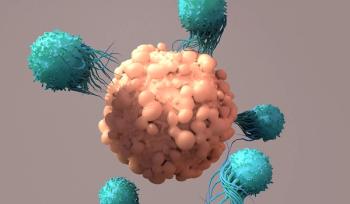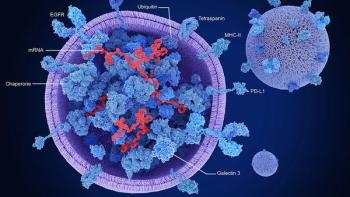
- BioPharm International June 2025
- Volume 38
- Issue 5
- Pages: 8-11
New Modalities in Biopharmaceutical Development Transform Industry
The industry is diversifying pipelines from traditional small-molecule drugs to embrace complex and exciting new modalities.
Advanced biology has been harnessed in recent years to target complex diseases, allowing for treatment, and possibly cures, for previously untreatable illnesses, according to Edwin Stone PhD, CEO of Cellular Origins. “The fact we are talking about so many different modalities now is a tribute to our ability to better exploit biology and turn it to the needs of a particular disease,” says Stone. “This is going to expand as we get better tools, technologies, and understanding to make more complex, safer, and efficacious treatments. Second, there is a gap between ‘approved and commercialized products’ and ‘approved and commercialized and scaled products.’ Being successful at the last of these, whether through choice of modality, design of biological process, or use of technologies, will determine successful therapies.”
The biopharmaceutical pipeline, which has become focused on specialty drugs and oncology treatments, features a diverse blend of modalities and mechanisms of action, according to Kevin Dondarski, principal at Deloitte Consulting. “Simply from an oncology standpoint, we’ve seen a proliferation of antibody drug conjugates,” Dondarski said in an interview with Pharmaceutical Technology® (1). “There’s the next wave of PD and PD-1s, BTK [Bruton’s tyrosine kinase] inhibitors, Kras G12 inhibitor [coming into the market]. From an immunology and broader perspective, the amount of effort focused on IL-5s [Interleukin], 6s, 13s, 17s. It’s exciting; it’s not as if there’s a small number of areas of focus where a lot of players are playing, but rather a much larger aperture in terms of where the industry is investigating these days.”
As of May 19, 2025, FDA lists 12 novel drug approvals for the year, with multiple treatments targeting cancer (2). For the past few years, new modalities to address cancer have been advancing at a fast pace (3). These advancements are starting to branch out to treat autoimmune and other disease areas.
Developments impacting innovation
Developments often come with costs, however, and these costs can sometimes get in the way of innovation. David Phasey, Innovation Director at 3P innovation, points to the cost of some innovative modalities currently being developed and the resulting payer model associated with them that may result in a reduction for long-term patient treatment. “To support these payer models, diagnostics will be required to forecast patient success prior to adoption,” says Phasey. “The need to reduce therapy costs will partly be achieved by increasing patient numbers and therefore economies of scale, accelerating when these therapies become sufficiently efficacious and cost-effective to become first-line treatment. This increase in volume will drive efficiency in the manufacturing of these therapies, primarily achieved with more automation and less operator involvement.”
New modalities often mean a shift in focus for the industry. Erik Digman Wiklund, PhD, CEO of Circio AB (Sweden) expects monoclonal antibodies and small-molecule drugs to fragment, and the commercial landscape of modalities to become more diversified, including more cell and gene therapies, novel DNA and RNA formats like circular RNA, and next-generation antibodies. These modalities will include a shift toward personalized treatments, rare diseases, and targeting of smaller patient populations, according to Wiklund.
“Each of these modalities are distinct in terms of delivery, pricing, and market dynamics,” says Wiklund. “For cell and gene therapies, especially autologous treatments, complex logistics and highly specialized capabilities are required. This will demand new commercialization and reimbursement models to incentivize development and ensure patient access in smaller markets. We’re also seeing increased ‘platformization’ as a trend, in which companies leverage a single modality or technology across multiple indications, leading to faster development cycles and more modular commercial strategies once the platform is validated.”
Among the most innovative product areas being developed, according to Maryland Franklin, PhD, vice president and enterprise head, Cell and Gene Therapy, Labcorp, are cell and gene therapies, which unlike small-molecule drugs and traditional monoclonal antibodies, use live cells or genetic material. “To me, the biggest difference is that cell and gene therapies are aiming to cure disease,” said Franklin (1), “whereas more traditional products really work in managing disease. Two of the most new and innovative approaches in early clinical development are the in vivo CAR [chimeric antigen receptor] T delivery and some of the newer gene-editing strategies, like base editing and prime editing,that improve upon limitations we’ve seen with CRISPR [clustered regularly interspaced short palindromic repeats]-Cas9 systems. In both instances, we’re seeing the industry work on solutions to address safety concerns.”
While limitations exist with these products, the industry has moved into in vivo delivery of CAR-T products to address safety and manufacturing complexity challenges, according to Franklin, and there has been preclinical success with in vivo CAR delivery. Franklin points to Interius BioTherapeutics’ announcement in October 2024 that the company had dosed the first patient with an in vivo CAR gene therapy for B-cell malignancies (4).
“We know other companies like Umoja have been in this space for a number of years,” added Franklin. “And very recently, the announcement that AstraZeneca is acquiring ESO Biotech is certainly a sign that in vivo CAR T is an area to watch. On the gene-editing side, there’s obvious potential for wide applicability from directly editing T cells or other cells to make better cellular therapies, and of course, for direct in vivo editing.”
Industry growth has been fueled in the past decade by the convergence of technology and funding, according to Franklin, despite the recent economic downturn, especially with an influx of funding that entered the cell and gene therapy space in 2021 and 2022.
“With advanced science and technology, we now see more than 30 FDA-approved cell and gene therapy therapeutics,” Franklin explained. “And while manufacturing and cost of goods challenges remain—the bottleneck on manufacturing for today’s market—there are some reports that maybe it’s easing up. There may be actually more capacity in some areas. However, overall, we’re still trying to work through a number of different product types and different patient populations that we’re manufacturing for.”
Drug delivery needs
Innovation in the biopharmaceutical field is outpacing the availability of targeted delivery systems, according to Wiklund. This “bottleneck” will potentially result in investment and growth in the development of new delivery methods that target specific tissues and cell types, as well as those more convenient for patients.
“As an example, technologies that allow room-temperature stability for biologics and mRNA [messenger RNA]-based products will be especially important for global distribution and pandemic preparedness,” Wiklund explains. “Alternative delivery routes, such as intranasal and long-acting injectable formats, can improve potency and reduce cost for several types of pharmaceuticals, including vaccines, antibodies, and gene therapies.”
Being able to reach specific tissues and cells will also benefit the development of therapies for chronic diseases, according to Wiklund. Lipid nanoparticles (LNPs) are the prevalent technology and effective for targeting muscle and liver, “with delivery to immune cells in the spleen for in vivo cell therapy approaches looking promising in pre-clinical studies, but there are major limitations in terms of tissue distribution, cargo release efficiency, and toxicity,” notes Wiklund.
“As LNP technology evolves and new delivery chemistry becomes validated, together with the addition of specific targeting moieties, novel therapeutic opportunities will be unlocked. However, progress in the clinic has been slower than expected, and the delivery field will need to show some short-term success to drive more enthusiasm to support the next generation of targeted therapeutics,” Wiklund says.
The choice of drug delivery method is a significant factor in biopharmaceutical development and comes with cost considerations and challenges, such as filling, assembling, and producing custom modes of drug delivery. According to Phasey, the industry is moving to standardized drug delivery components in such products as autoinjectors to combat these challenges.
“The rise in high-viscosity parenteral products, as therapy manufacturers shift toward self-administration outside of clinical settings, is a key trend driving this change,” says Phasey. “Alternative delivery routes in conjunction with novel formulations, such as nasal sprays and inhalable formulations, are appearing for non-invasive, rapid administration—we saw this with exploring inhalable COVID vaccines and recently a trial for an inhaled gene therapy. Likewise, subcutaneous and long-acting injectables for antibodies and other large molecules are enabling self-administration and improving adherence.”
Impact of technology
Artificial intelligence (AI), machine learning (ML), and digitization have made significant advancements in the past decade and are used in biopharmaceutical manufacturing processes. AI is used in quality inspection processes to identify potential defects in vials or monitor microbial growth, Phasey says. “Smart algorithms have been in use for many years for adapting processes in response to sensor inputs for process optimization in line with QBD [quality-by-design] principles, but AI is likely to drive an increased ability to optimize processes, particularly where the input to the process might even be unique to each manufacturing batch for example, such as autologous ATMPs [advanced therapy medicinal products],” he says.
“As more data are recorded during manufacture, AI/ML will enable identifying the cause of more complex deviations and potential improvements, particularly when the drivers are multiparametric and non-intuitive,” Stone agrees. “Adaptive processing is responding to how the manufacturing process is progressing. Currently, processes are typically rigidly followed.With better sensors, data, and algorithms, processes can be changed to react to the progress of an individual batch. For example, a delay in cell expansion may see a change to the timing, volumes and concentrations of future reagent additions to bring expansion back in line with the target.” Stone also sees the benefit of AI in combination with robotics. “Cell therapy manufacturing in particular is uniquely placed to benefit from the opportunities this enables due to the high cost of manufacture and complex interdependencies of the critical parameters in the manufacturing operations,” he says.
AI/ML provides an ease of translation compared with manual operations, Stone explains, allowing algorithms to be moved from stage to stage more simply than training new operators. “Particularly as the number of operators needed for commercial manufacture is many times higher than clinical, which in the case of cell therapy creates a fundamental limit at present to the number of doses that can be produced, using automated manufacture (whether AI/ML driven or not) marks a step change in our ability to scale and the speed at which scale can be achieved,” he says.
How does AI translate to development of biopharmaceuticals? According to Phasey, AI can be used to predict side effects and patient outcomes, making it more likely for new molecules to make it to market.
“I would expect the power of AI to speed up the analysis of clinical data too, spotting trends and identifying successful drug candidates sooner,” Phasey states. “At a manufacturing level, the quantity of data gathered during the discovery and clinical stages is likely to provide a far greater understanding of sensitivity of the product quality to changes in the manufacturing processes. This should allow predicative modeling from earlier in the drug development journey (e.g., what will be the effect when I transition from a 1L bioreactor up to a 50L bioreactor). Historically, this predictive approach for processes has been achieved by use of a range of statistical modeling tools and use of test methods, such as design of experiments, to characterize processes. As AI/ML tools and digitization become used more widely, this should allow more refined process models to be created to understand subtleties in process optimization, which haven’t been possible previously. You would, therefore, expect fewer surprises in the scale-up journey; there should be fewer instances when the laboratory process doesn’t translate to the commercial-scale manufacturing.”
Digitalization can benefit automation and device assembly, specifically, according to Phasey, with smart systems and data integration enhancing quality assurance and traceability, as well and making operations more efficient.
“Traceability of the primary container allows manufacturing data and quality data to be associated with the product at an individual container level rather than at the batch level, which has been the norm. This digitization approach enables better trending of processes and monitoring of process quality,” Phasey explains. “If downstream quality inspection processes can identify defects and associate them with a specific vial, for example, the entire history of that vial can be investigated and the root cause quickly identified. This type of technology, in conjunction with machine instrumentation to monitor trends in machine performance will unlock the next step change in machine efficiency and quality. Technology now exists even for monitoring operator actions to identify when good aseptic practice is not followed.”
Innovation and the future
The rise of antibody formats, RNA, and cell and gene therapies is reshaping the biopharmaceutical industry, according to Wiklund, because they require highly specialized manufacturing processes that force the industry to invest in new infrastructure and technologies. These requirements also impact the contract manufacturing industry, because customers need new ways to develop and manufacture these products.
In addition, the small batch sizes of some current innovative biopharma therapies will have an impact on the industry as a whole, according to Phasey, as the personalized treatment market continuous to grow and change the footprint of drug production. “Point-of-care production or hub-and-spoke models could become the norm,” he says.“The automation of patient and manufacturing data will be key to this. The real question is whether the pharmaceutical industry is ready to adopt and accept this level of automation into what is a very slow-to-change industry.Can regulation keep up with technology and the opportunities it presents?”
“It’s difficult to really address which [modalities] will be successful in terms of getting to the market, because that’s less of a modality factor and more the results of the safety and efficacy of the medicines in trials,” Dondarski said (1). “I think the question that is commonly asked as it relates to the new modalities is how we are going to produce and sustain them. In a small-molecule world, it was much easier to quickly expand or diversify a supply chain by leveraging third-party manufacturers. I think there’s a lot more inherent risk and challenges associated with doing that. Will companies continue to focus in these areas internally or through acquisition, or will the third-party landscape reach a sufficient degree of maturity that provides some flexibility to manufacture those externally? It’s difficult to predict one way or the other.”
Franklin added, “We are at the cutting edge of scientific and technological advancement to improve health and improve lives in a way that we’ve never seen before.I heard Peter Marks from the FDA talk about the agency’s exploration of a risk-adapted framework based on consideration of variable manufacturing and clinical data requirements so that they don’t over- or under-regulate these advanced therapies” (1).
FDA’s guidance on platform technology designation, published in May 2024, outlined factors that included how companies could leverage data from these types of programs and how these programs might make drug development more efficient (5). Franklin believes these technologies will shape how products are developed and manufactured. “I don’t know that it’s just a one-way street between the products driving the manufacturing or the manufacturing driving the products,” she stated (1). “It really has to be a two-way street, back-and-forth approach between the drug companies developing the products and the CDMOs [contract development and manufacturing organizations] manufacturing them.”
According to Stone, “The exciting thing about the future in this sector is its unpredictability.We have an unprecedented number of modalities, all with incredible potential. The future, therefore, is going to be highly heterogeneous, with people exploiting the diversity of tools to create a wide range of exciting therapies.”
References
- Mirasol, F. Drug Digest: Keeping Pace with Progressive Technologies in Biopharma Development. PharmTech.com. April 25, 2025.
- FDA. Novel Drug Approvals for 2025. FDA.gov (accessed May 19, 2025). fda.gov/drugs/novel-drug-approvals-fda/novel-drug-approvals-2025
- Haigney, S. Emerging Treatments for Cancer. BioPharm International, Next-Generation Biotherapeutics eBook. 2025 April.
- Interius. Interius BioTherapeutics Doses First Patient with in vivo Chimeric Antigen Receptor (CAR) Gene Therapy for B-cell Malignancies. Press Release. Oct. 23, 2024. interiusbio.com/press-release/interius-biotherapeutics-doses-first-patient-with-in-vivo-chimeric-antigen-receptor-car-gene-therapy-for-b-cell-malignancies/
- FDA. Platform Technology Designation Program for Drug Development, Draft Guidance (CDER, CBER, May 2024). fda.gov/regulatory-information/search-fda-guidance-documents/platform-technology-designation-program-drug-development
About the author
Susan Haigney is lead editor of BioPharm International®.
Article details
BioPharm International®
Vol. 38, No. 5
June 2025
Pages: 8–11
Citation
When referring to this article, please cite it as Haigney, S. New Modalities in Biopharmaceutical Development Transform Industry. BioPharm International2025 38 (5).
Articles in this issue
6 months ago
Qualifying Expertise for Quality Support6 months ago
Guidance on Quality Culture Standards6 months ago
Inspiring DevelopmentsNewsletter
Stay at the forefront of biopharmaceutical innovation—subscribe to BioPharm International for expert insights on drug development, manufacturing, compliance, and more.





